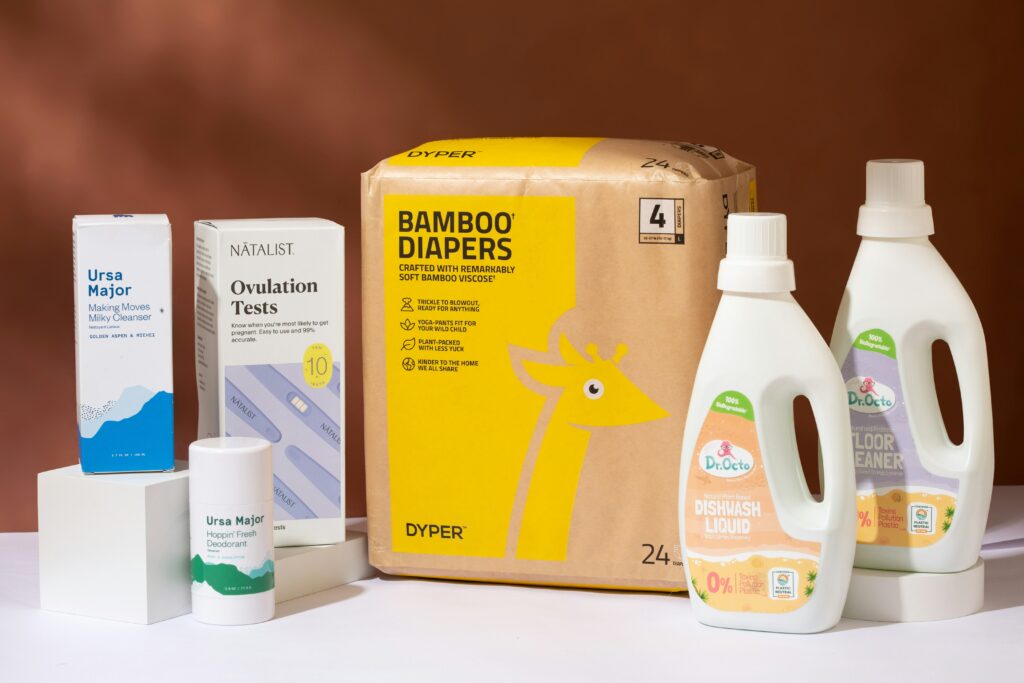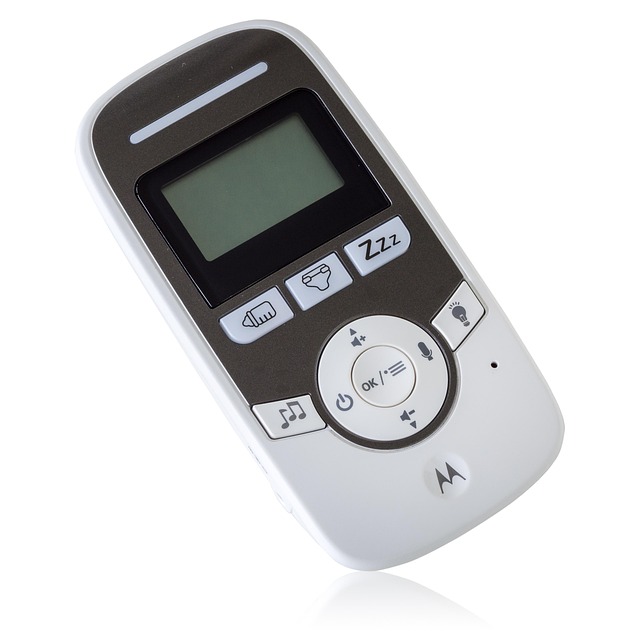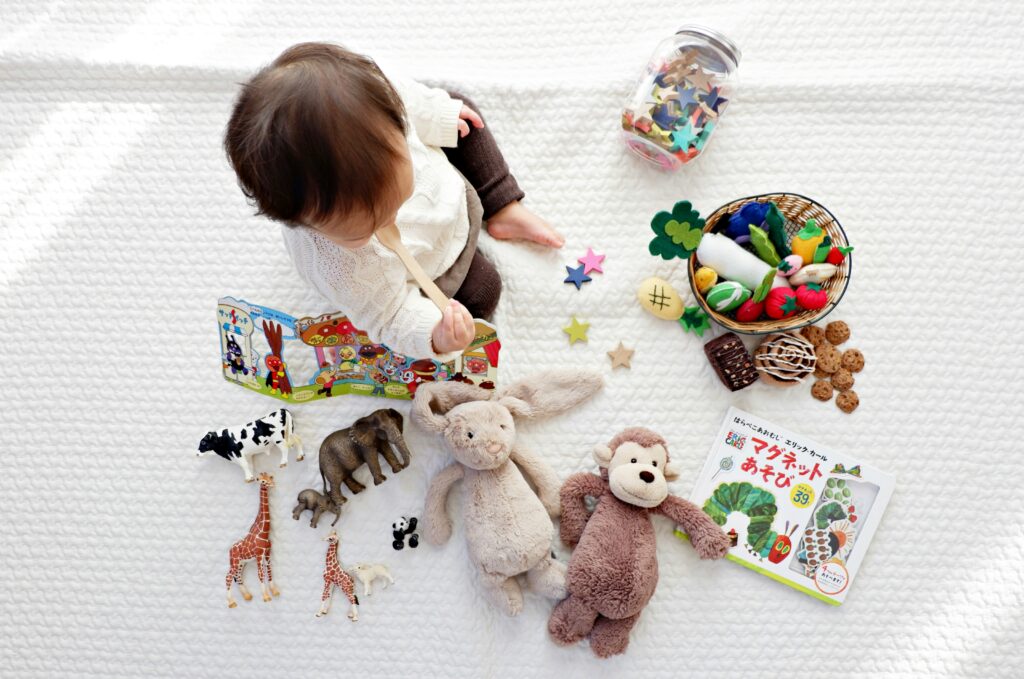Why Eco-Friendly Baby Products Matter
Newborns are more vulnerable than most people realize. Their skin is thinner, their immune systems still warming up, and their exposure to the world just getting started. That means the chemicals often found in mainstream baby products—like phthalates in plastic toys, formaldehyde in crib mattresses, or synthetic fragrances in lotions—can hit harder. These compounds aren’t just irritants; some are linked to serious developmental and hormonal issues.
Conventional baby gear also leaves a lasting mark beyond your nursery. Think about how many diapers, wipes, bottles, and toys your baby will use in just one year. Most of it’s made from plastic or other petroleum-based materials that won’t break down for centuries. That’s a lot of waste for someone who hasn’t even said their first word yet.
Choosing sustainably made, non-toxic baby products isn’t just a feel-good move. It’s practical. You limit your baby’s exposure to harmful substances and reduce your environmental footprint at the same time. It’s not about perfection—it’s about smarter choices, one product at a time. A bottle made of glass instead of plastic. A bib that lasts through two kids instead of two months. It adds up.
When it comes to baby gear, the materials matter—plain and simple. Non-toxic, BPA-free, and phthalate-free should be your baseline. No sneaky chemicals, no weird plastics; just straight-up safety. These compounds have been linked to everything from hormone disruption to respiratory issues. Your baby doesn’t need that.
Next up: sustainability. Look for stuff made from materials that are either recyclable, biodegradable, or responsibly sourced. That could mean bamboo that regenerates quickly, organic cotton grown without pesticides, or even bioplastics that break down instead of piling up.
Certifications are your shortcut through the marketing fog. GOTS means the textiles are truly organic. OEKO-TEX® tells you the product is tested for harmful substances. USDA Organic isn’t just for food—it can apply to skincare and textiles, too. If a product boasts these, you’re probably in the clear.
And don’t ignore the packaging. Some brands go all out with plastic wraps, layers of tags, and glossy boxes. Skip ‘em. Minimalist packaging isn’t just aesthetically clean—it means the company thought beyond the product and into the waste it creates. Bonus points if they use recycled paper or compostable mailers.
Mindful production has a vibe—it usually means smaller batch processes, ethical labor practices, and transparency on sourcing. Ask questions. Read labels. Less flash, more function. That’s the goal.
Diapers That Don’t Hurt the Planet
Choosing the right diaper for your baby isn’t just about comfort—it’s also a step toward minimizing your environmental footprint. From cloth to biodegradable disposables, today’s options can support both your parenting style and your sustainability goals.
Cloth vs. Disposable Eco-Diapers
Both cloth and biodegradable disposables have their merits. Before deciding, consider your child’s needs and your capacity for cleaning and maintenance.
Cloth Diapers:
- Reusable, which dramatically cuts down landfill waste
- Come in adjustable sizes to grow with your baby
- Require time and water for washing, which may limit flexibility
Eco-Friendly Disposables:
- Made from plant-based or biodegradable materials
- Easier to use in childcare or travel settings
- Still produce some waste, though far less than standard disposables
Top Picks for Sustainable Diapering
Here are some brands leading the way in eco-friendly diaper options:
Biodegradable Disposables:
- Dyper – Bamboo-based, compostable, and free from harsh chemicals
- Bambo Nature – High-performance protection with certified eco-credentials
Cloth Reusables:
- GroVia – Easy snap-in inserts and stylish covers
- Esembly – Designed for modern households and city dwellers
What About Comfort and Cleanup?
When choosing an eco-friendly diaper, you don’t have to sacrifice protection or convenience:
- Fit: Look for styles that offer adjustable sizing and stretchy closures
- Absorption: Multi-layer cloth inserts or plant-based super absorbent cores help prevent leaks
- Ease of Use: Many modern cloth options are designed to work similarly to disposables, with easy snaps or Velcro systems
The Real Cost: Upfront vs. Long-Term
Eco-diapering can seem expensive at first—but the math changes over time:
- Disposable Eco-Diapers: Cost more per unit than mainstream brands, but offer better health and environmental outcomes
- Cloth Diapers: Higher upfront investment, followed by minimal ongoing expense (especially if reused for multiple children)
Tip: Consider hybrid use—cloth at home, disposables while out—to balance cost, convenience, and sustainability.
In the end, there’s no one-size-fits-all solution. But knowing your options makes it easier to choose diapers that care for both your baby and the planet.
Baby Skincare Done Clean
The Problem with Traditional Baby Skincare Products
Many conventional baby lotions, wipes, and creams are packed with synthetic chemicals that can irritate delicate skin. Newborns and infants have highly absorbent skin, making them especially vulnerable to toxins found in standard skincare items.
Common concerns include:
- Use of parabens, sulfates, and artificial preservatives
- Alcohol-based formulas that dry out or disrupt the skin barrier
- Petroleum-derived ingredients that offer short-term softness but long-term risks
Even seemingly harmless ‘baby scented’ products may contain phthalates or undisclosed synthetic fragrances, which are linked to respiratory problems and hormone interference.
Clean Brands Parents Love
Luckily, more baby brands are rising to the challenge with safer, plant-based alternatives. These options prioritize both your baby’s skin and environmental safety without compromising performance.
Top-rated eco-friendly baby skincare brands include:
- Earth Mama Organics – Known for its gentle, certified organic formulations
- Babo Botanicals – Offers fragrance-free and hypoallergenic options great for sensitive skin
- Pipette – Uses clean biotechnology to create non-toxic, eco-certified baby skincare
- Weleda – A long-time eco brand with baby creams made from calendula and other natural oils
- Ecoriginals Wipes – 100% compostable and infused with soothing natural ingredients like chamomile
What “Fragrance-Free” Really Means
“Fragrance-free” on packaging can be misleading. Some products still contain masking scents or naturally derived aromas not listed explicitly.
When evaluating products, check for:
- Labels that say unscented or contain no added fragrance
- Certifications such as EWG Verified or USDA Organic
- Full disclosure of all ingredients—ideally with no synthetics designed to mimic scent
Natural Alternatives That Work
Many parents are switching to single-ingredient or DIY blends to ensure purity. Some effective natural solutions include:
- Coconut oil – A natural moisturizer that also has mild antibacterial properties
- Aloe vera gel – Offers cooling relief for rashes and irritation
- Shea butter – Helps lock in moisture without artificial additives
- Witch hazel (alcohol-free) – Can be used on wipes or cotton pads for gentle cleansing
Choose products with the shortest ingredient list and a history of safe use. Less is often more when it comes to baby skincare.
Remember: what you put on your baby’s skin matters just as much as what you feed them.
Sustainable Feeding Supplies
When your baby starts eating real food, the gear you use matters—probably more than you think. Let’s break it down:
Glass and Silicone Bottles vs. Plastic Glass bottles are sturdy, easy to clean, and don’t leach chemicals. They also last a long time—think multiple-kid lifespan. But they’re heavier and can break (though most have silicone sleeves now for protection). Silicone bottles are soft, flexible, and safe for dishwashers and freezers. They’re lighter than glass, more durable, and still free of BPA, phthalates, and PVC. Plastic? Cheap, yes. But even BPA-free plastics have raised red flags over time—and they tire out quickly under regular heat and wash cycles.
Compostable or Reusable Baby Spoons, Plates, and Snack Containers Think bamboo, stainless steel, or silicone. These last longer than plastic and don’t soak up strong odors or dyes from food. Compostable stuff (like wheat straw or cornstarch-based utensils) is good for travel or quick backups—but they’ll definitely wear out faster. Best bet for daily use: solid silicone or bamboo that can take the hits and still look decent.
Eco-Friendly Bibs: What Actually Works Look for bibs made of food-grade silicone (easy to wipe and rinse), or organic cotton with a waterproof backing. Avoid anything labeled “PVC-coated” or with “proprietary blends”—code for stuff that doesn’t break down easily and might not be safe during mealtime. Pro tip: check if they survive both a toddler tantrum and the laundry machine. If not, keep looking.
Spotting Greenwashing in Feeding Gear Just because it says “eco” doesn’t mean it is. Vague labels like “non-toxic” or “natural” aren’t enough. Look for third-party certifications (like LFGB-certified silicone). Read past the packaging—does the brand share full material breakdowns? Do they use recycled packaging? Any mention of end-of-life recycling or take-back programs? If it’s all fluff and no facts, it’s probably greenwashing.
Feeding babies sustainably isn’t about flashy swaps—it’s about gear that works, holds up, and doesn’t end up as waste after three months.
Green Nursery Essentials
A baby’s nursery should be a peaceful, healthy space—not filled with harmful materials or unnecessary waste. Creating an eco-conscious nursery not only protects your child from exposure to toxic substances but also promotes long-term sustainability. Here are some essential swaps and smart choices worth making.
Non-Toxic Cribs and Mattresses
Standard cribs and mattresses often contain harmful chemicals like VOCs (volatile organic compounds), flame retardants, and glues that release off-gassing into the air your baby breathes. Prioritize options made with natural materials and certified for safety.
- Look for cribs made from FSC-certified solid wood with non-toxic finishes
- Choose mattresses that are GREENGUARD Gold Certified or GOTS-certified organic
- Avoid vinyl covers and opt for breathable, organic cotton casings
Organic Sleep Essentials
Textiles like sheets, sleep sacks, and curtains are in constant contact with your baby’s skin and lungs. Choosing organic alternatives reduces exposure to pesticides and synthetic dyes.
- Sheets & bedding: Opt for 100% organic cotton or bamboo materials
- Sleep sacks: Look for GOTS-certified options with zipper guards and soft stitching
- Curtains: Blackout curtains made from natural fibers help with better sleep and limit synthetic dust
Air Quality Matters
When it comes to cleaner nursery air, both nature and innovation have a role to play.
- Air-purifying plants: Spider plants, bamboo palms, and rubber trees can help reduce VOCs (but make sure they’re safe if touched or ingested by kids)
- Tech alternatives: Air purifiers with HEPA filters can trap pollutants and dust without the upkeep plants require
Choose Items That Grow With Your Child
A sustainable nursery isn’t just about safety—it’s about longevity. Select essentials that adapt as your child grows to reduce frequent replacements.
- Convertible cribs that transition into toddler beds
- Storage bins or shelves made from sustainable materials designed to last
- Multi-functional furniture like changing tables that become dressers
Building a greener nursery is ultimately about intentionality. Every mindful choice supports a healthier start for your baby and a smaller footprint for the planet.
Toys That Are Safe and Sustainable
Forget the flashing lights and plastic squawk boxes. The best eco-friendly toys aren’t the loudest—they’re the most thoughtful. When picking toys, go for materials like wood (FSC-certified, ideally), organic cotton, and recycled plastics. These hold up over time, are safer for mouthing, and don’t contribute to the landfill after a short shelf life.
Skip batteries. Aim for toys that support open-ended play—blocks, stackers, soft dolls, puzzles. These foster real developmental gains like fine motor skills and imagination, without overstimulating your baby.
Transparency matters, too. Brands like PlanToys, Grimm’s, and Green Toys are clear about their sourcing and ethics. Look for companies that tell you exactly what went into the toy—and why it matters.
And here’s the simple trick to reduce overwhelm and cut down on buying: toy rotation. Keep a few quality options available at a time, stash the rest, and swap them out every couple of weeks. You’ll stretch attention spans, reduce clutter, and keep play fresh without needing to constantly shop.
Where to Find & How to Shop Smart
Eco-friendly baby products are more accessible than ever—if you know where to look and how to shop mindfully. From trusted marketplaces to helpful subscription models, here’s how modern parents are sourcing gear that’s safe, sustainable, and budget-conscious.
Trusted Marketplaces and Brands
When shopping for eco-friendly baby products, it’s essential to seek out retailers and brands that prioritize transparency and sustainability at every stage of production.
Top Eco-Conscious Marketplaces:
- EarthHero – Curated selection of baby essentials with verified sustainability standards
- The Tot – Focused on non-toxic, ethically sourced items
- MightyNest – Offers monthly boxes and individual items, vetted with strict ingredient standards
- Buy Buy Baby (Green Section) – Growing selection of certified organic and eco-responsible options
In-Demand Eco Baby Brands:
- Burt’s Bees Baby – Organic clothing, bedding, and skincare
- Lalo – Stylish, non-toxic feeding supplies and minimalist furniture
- Green Sprouts – BPA-free, plant-based feeding and hygiene products
- Coterie & Dyper – Leaders in sustainable diaper technology
Budget-Smart Eco Shopping Tips
Going green doesn’t mean going broke. Making mindful swaps and purchases can align with your financial goals.
Balancing Sustainability with Budget:
- Prioritize high-impact items first, like diapers or skincare products
- Buy intentionally—skip unnecessary gadgets and trend-based gear
- Look for bundle deals or family packs for cost savings
- Watch for seasonal sales from eco-brands (many offer deep discounts during Earth Month and holidays)
The Case for Second-Hand
Choosing pre-loved baby gear is not only budget-friendly—it’s often the most sustainable choice.
Safe Ways to Reuse and Recycle:
- Use trusted resale platforms like GoodBuy Gear, Rebelstork, or Facebook Marketplace (local groups)
- Avoid second-hand safety-regulated items like car seats unless you’re certain of their history
- Sanitize fabric and high-contact items with baby-safe cleaners before use
- Trade with fellow parents through community swaps or parent groups
Subscription Services That Help Curb Overbuying
Subscription models can simplify shopping and reduce waste by keeping purchases on a predictable cadence.
Smart Subscription Services:
- Hello Bello Diaper Bundles – Eco diapers and wipes delivered regularly
- Ecocentric Mom Box – Curated monthly picks for moms and babies
- Made Of – Build-your-own box for organic baby care essentials
- Lovevery Play Kits – Developmentally-aligned toy kits that grow with your baby
These services help prevent impulse buying and reduce product overflow, offering a more intentional approach to consumption.
By shopping smart, choosing second-hand when feasible, and subscribing strategically, parents can raise eco-conscious kids without sacrificing convenience or stretching their budget too thin.
Final Word: Every Little Switch Matters
Choosing eco-friendly baby products isn’t about being perfect—it’s about being intentional. Even small changes in your shopping habits and household routines can have a significant impact on your baby’s health and the environment.
Start Small – and Build As You Go
You don’t have to overhaul everything at once. Focus on areas where making a sustainable switch is easy and affordable:
- Replace one-off plastic items (like utensils or wipes) with reusable options
- Choose organic or biodegradable products when restocking essentials
- Swap out synthetic fabrics in your nursery with natural, breathable materials
Small steps add up. Each conscious decision lays the groundwork for long-term habits.
Model Sustainable Choices Early
Your baby may not yet understand the importance of sustainability—but they’re watching you. By making eco-conscious decisions, you’re modeling values such as care, responsibility, and mindfulness.
- Opt for ethical brands and low-impact packaging
- Shop with intention—not impulse
- Embrace minimalism: less clutter, more meaning
Stay Informed, Stay Empowered
The eco-friendly parenting landscape is always evolving. The best way to stay ahead?
- Join trusted parenting communities focused on sustainability
- Subscribe to newsletters and blogs with vetted recommendations
- Avoid greenwashing by learning how to read labels and certifications
For more guides and practical tips, check out MomSmartHub—a reliable resource for modern, mindful parents.
Remember: every switch you make matters, and you’re not alone in this journey.


